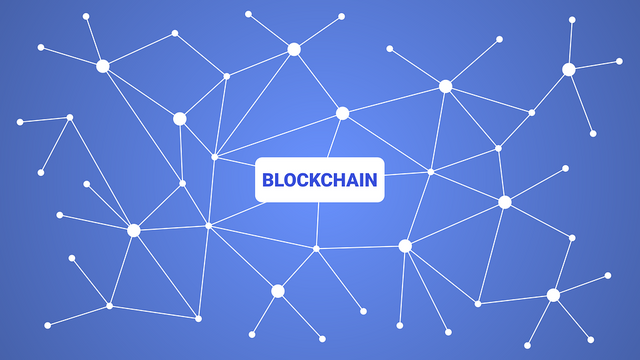
The concept of loyalty programs is an established idea across several industries, hearkening back to stamp collecting over a century ago. Such incentives have long provided an excellent way for companies to encourage participation, foster engagement, cultivate loyal followings, and reward their best customers. Furthermore, loyalty programs are also an excellent source of information about customer preferences.
Even so, loyalty programs are not automatically successful and can be expensive to implement. Companies must invest heavily when constructing and introducing these rewards structures, populating them, and ensuring they provide real value to customers. Moreover, the market saturation for loyalty programs has effectively commoditized them, reducing the ‘loyalty’ aspect and unique value proposition. To stand out, companies must find new ways to both reduce their costs and offer a clear advantage.
The result is a growing embrace of blockchain for companies seeking to shrink their operational overheads while delivering a more streamlined experience to customers. The technology’s benefits for loyalty programs cover everything from unifying information, providing better access to companies, and offering customers a real stake in the value chain. While the technology is emerging, the potential is there for major changes to envelope the current loyalty program paradigm.
Consolidating Disparate Systems to Create Synergy
A defining characteristic of loyalty programs is that they’re unique to a company and non-transferable. With their own rules and points systems, companies are loath to let users exchange their points with other programs and competitors. While understandable on an individual level, the overall effect of this de facto isolation is a system that disincentivizes loyalty as customers constantly seek the program with the widest scope and best benefits.
Blockchain-based systems invert this concept by embracing transferable loyalty rewards. Instead of closed-off platforms, blockchain systems create central wallets that help users redeem their rewards across several service providers.
Companies like GOeureka, for example, are already offering an improvement for the hotel industry. The company’s platform encourages users to collect reward points from different sources, enabling exchange for a variety of rewards across services (even outside of the hotel industry). These platforms empower users and create new business partnership possibilities, distributing even greater financial rewards.
Blockchain Opens Loyalty Programs to More Industries
Whereas loyalty programs have traditionally been the purview of a few industries (travel, hotels, financial services, and grocery stores), blockchain’s tokenized ecosystems offer an easy way in for a wider range of industries to participate by formulating their own incentive-based programs.
The ability to create tokens specific to a company let users earn monetary rewards that can be used inside of a company’s ecosystem, or exchanged for other currencies, including fiat. Additionally, it lets companies create build incentives around activities that normally wouldn’t warrant loyalty points.
In the digital visual content industry, for instance, new companies are taking advantage of the monetization opportunities. Blockchain-based platform Selfllery, for instance, helps users earn rewards for publishing their images and visual content on their website. Other platforms are taking advantage of tokens by incentivizing participation for activities such as completing surveys, tapping into existing social networks, and displaying their loyalty with pictures or social posts. These new ways to reward loyalty are possible because tokens generate a real monetary incentive.
Companies Can Reduce Their Overhead and Upfront Costs
Many companies forgo creating loyalty reward programs because of the associated upfront costs. Launching these programs involves building an infrastructure, contracting rewards, creating support for users, and more. Even worse, these costs are not limited to the initial introduction, but tend to stretch out over the lifetime of a program.
Once launched, companies must contend with transactional costs, having a dedicated support staff, and attracting new customers. For many, the process becomes unsustainable and the effects are passed onto consumers, raising costs and reducing incentives.
Blockchain reduces much of this friction by simplifying or outright reducing some of the processes involved with creating and maintaining loyalty programs. Smart contracts, for example, can often replace agents and support staff by automating system management. Distributed ledgers can also better track rewards and user metrics, contributing to a more transparent and effective platform for both users and providers.
Element coin—or ELM—is building a plug-and-play loyalty rewards platform that lets companies easily build out their programs and provide better user metrics. By expediting the development process, companies can significantly reduce their costs and make these incentive-based programs profitable.
Loyalty Programs Can Better Protect Their Data
While not as common as in other sectors, there have been major hacks of loyalty programs such as the IHG Rewards Club. It is easier to fraudulently use points than credit cards, and hackers can do so with little risk of being discovered. Hacking presents a problem due to the centralized nature of data storage most loyalty programs employ. All user data rests on single databases that, while secure, are appealing because of the sheer amount of information available.
One of blockchain’s most highly touted advantages is the security upgrade it offers in terms of data protection. Because information is both decentralized and encrypted, it is significantly more difficult to access. In addition, the mesh-like networks blockchain rests on are harder to hack when compared to legacy systems traditionally deployed by rewards programs.
Finally, user information is protected by the ledger. Loyalty point data is tied to a user’s single public identity, which is encrypted and completely secret. The ledger’s immutable nature also makes it easy to spot fraud.
Making the Switch
For companies, there is little doubt that the status quo needs an update. Loyalty programs are increasingly isolated and commoditized, leading to higher costs and less satisfied customers. By embracing technologies that reduce costs, allow for creative rewards, promote fungibility, and incentivize users better, more industries can take advantage of loyalty programs and tap their potential. Fortunately for these services, blockchain promotes a value-added architecture that is perfectly designed for companies to connect directly with their stakeholders and forge stronger relationships.
Posted from my blog with SteemPress : https://cryptocoremedia.com/blockchain-loyalty-programs/